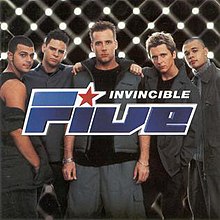I suppose I'm being self indulgent and totally off gardening while I do my little history of our old house remodel. I've been wanting to chronicle some of the "events" and while writing, it will remind me of other things I'd forgotten.
The very first thing we did to the old house and the thing that continued for months was clear out all the trash from the house. And this is the story of trash or the "Are you kidding me?" period of the renovation.
Keep in mind the home had been vacant for about three years. The last folks to own it had been youngsters who didn't have the means to keep it repaired and eventually the utilities were shut off. It had been used as a party house by both humans and animals. It had been used and abused.
 |
| Leftover mink shed |
My husband took nine (NINE!) pick-up truck loads of abandon appliances (washers, dryers, refrigerators, stoves - big stuff) to the junk yard. NINE! These appliances were in the house and in the yard. It's how we discovered where the well was located: under a refrigerator.
Two large piles of "things" that weren't harmful to the soil and water were buried. We planted our beautiful golden weeping willow on top of this and it has thrived. An entire semi trailer was filled with metal things for recycling: old corn picker, enough car parts to build a Grand Am from scratch, pots and pans and assorted stuff.
A semi trailer and another large truck of carpet, all the furniture and stuff left behind. The shag carpet was in shades of olive green, burnt orange, and gold. A clear indication of the era it was installed. The shag was so long it contained a whole Eco system of items, mostly pennies, straight pins and gunk. Gunk is really a word as you find out when you remodel.
I know this will set off some folks but in the country you can burn. We burned a lot of things. No, we didn't burn tires but it's pretty difficult to find a way to dispose of them. We did find a source.
 |
| Junk and gunk |
We both wore steel toed leather boots and always wore gloves. Gunk isn't something you want on you. Plus, used syringes and various personal protective latex things scattered the floor. Need I say more?
We found huge construction sized trash bags and filled them so full at times we had a hard time getting them out the doors.
Fifteen rooms, closets and hallways, basement and yard were all covered with trash. And gunk and stuff.
And animals. Our first indication of animals was the little paw prints on the old claw foot bathtub in the downstairs bathroom. No wonder they felt at home, it was the perfect place: easy to access, lots of protection and bedding. When we got a call from our electricians that a mother raccoon wouldn't let them in the attic, it was time for removal.
Mice ate the newly installed wiring in the basement as fast as it was installed and it was time to send them to their maker. The resident snakes just weren't holding up their end of the deal.
We ripped out all the carpet, paneling, window treatments and plastic covering, gutted the kitchen, entry and breakfast rooms to the studs.
We replaced 29 windows. Most were beyond repair or totally destroyed. We did think about the historical significance of the old windows and instead opted for custom made double paned. I do not for one second regret that decision to be warm when the wind starts blowing up here in the middle of winter. Same with the five outside access doors and the basement door.
 |
| Steel toe boots and gloves fashion attire |
We immediately had a new roof installed on the house. As we could get contractors scheduled, we had the foundation repaired, installed all new electrical, plumbing and a new heating system.
I was driving by the Methodist Church in Kewanee one day and saw an array of radiators sitting in the yard. Since some of our rooms didn't have radiators, I asked if they were for sale. They were converting to forced air and we were able to buy enough to complete every room. The original ones are beautiful with a wonderful design of the era of the home.
This house was pretty advanced for it's era. It originally had it's own electric generator in the basement, rain fed cistern, hand dug well, and arranged to take advantage of winter sun and summer shade.
 |
| Grandpa and Max working at the dunky house |
That's enough of grunge and gunk and trash and mechanics for today. I have this subtle need to go wash my hands..
 I raised the herb Stevia a few years ago (see my article "Seriously Sweet" about Stevia - on the side bar listing labels #459). I'm wanting to curb my use of refined white sugar because I tend to over indulge to the point of stupid. Refined white sugar turns into carbs and for me it turns into high HDL.
I raised the herb Stevia a few years ago (see my article "Seriously Sweet" about Stevia - on the side bar listing labels #459). I'm wanting to curb my use of refined white sugar because I tend to over indulge to the point of stupid. Refined white sugar turns into carbs and for me it turns into high HDL. 


.JPG)



.JPG)






 t
t


















.JPG)









